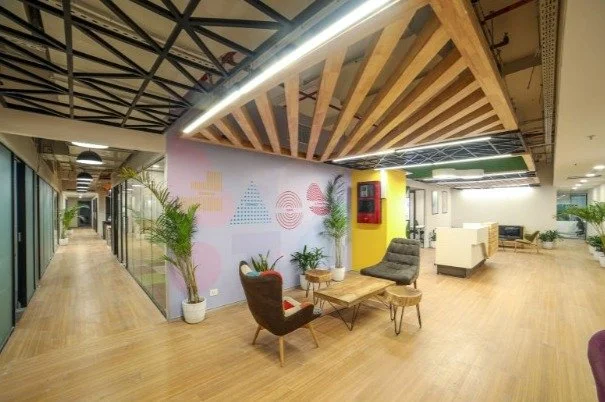Optimising Workspace Design for Enhanced Productivity and Well-being
In today's fast-paced and dynamic world, the importance of an efficient and comfortable workspace design cannot be overstated. Creating a well-designed workspace that fosters creativity, collaboration, and productivity is essential for businesses to thrive in the competitive market. Concept Sydney is a company that recognises the impact of workspace design on employee performance and well-being, offering innovative solutions to transform offices into environments that inspire and motivate.
The Importance of Ergonomics in Workspace Design
Ergonomics plays a significant role in designing workspaces that promote employee health and productivity. Incorporating ergonomic furniture and accessories, such as adjustable chairs, standing desks, and proper lighting, can significantly reduce the risk of developing musculoskeletal disorders and eye strain. Moreover, ergonomics helps minimise fatigue and discomfort, allowing employees to focus and deliver their best performance.
Fostering Collaboration and Communication
An essential aspect of workspace design is facilitating collaboration and communication among employees. By implementing open office layouts or creating designated collaborative spaces, businesses can encourage team members to share ideas, problem-solve, and work together more effectively. You can place a bulletin board in communal spaces and encourage employees to write down ideas as and when they pop up, then review them regularly. Additionally, incorporating technology such as video conferencing tools, whiteboards, and project management software can streamline communication and keep teams connected, even when working remotely.
The Power of Biophilic Design
The biophilic design focuses on integrating natural elements into the workspace to create a more relaxing and stress-free environment. Incorporating elements such as indoor plants, natural lighting, and materials like wood and stone can significantly improve air quality, reduce stress, and boost productivity. Employees can experience a greater sense of well-being by fostering a connection with nature, leading to increased job satisfaction and performance.
Flexibility and Adaptability
As businesses grow and change, designing workspaces that can easily adapt to new needs and requirements is crucial. Flexible and modular furniture can help create multi-functional spaces accommodating different work styles and tasks. Moreover, allowing employees to customise their workstations can promote a sense of ownership and autonomy, leading to increased motivation and engagement.
Integrating Technology and Connectivity
Incorporating modern technology and seamless connectivity into workspace design is vital for businesses to stay competitive in today's digital age. Equipping workstations with the necessary tools, such as high-speed internet, wireless charging stations, and smart devices, can help streamline processes and increase efficiency. Furthermore, integrating technologies like cloud-based systems and virtual collaboration platforms can support remote work and ensure that teams stay connected, regardless of location.
Prioritising Employee Well-being
A well-designed workspace should prioritise employee well-being by providing spaces for relaxation, socialisation, and physical activity. Breakout areas, communal spaces, and wellness rooms allow employees to recharge and socialise with colleagues, fostering community and camaraderie. Encouraging physical activity by incorporating on-site gyms or offering incentives for employees to exercise can also improve mental and physical health.
Branding and Identity
Incorporating a company's brand identity and culture into workspace design can create a sense of employee pride and belonging. Businesses can reinforce their values and mission by using brand colours, logos, and other visual elements in the office design. This helps establish a cohesive brand image and creates an environment that fosters employee loyalty and commitment.
Sustainability and Environmental Impact
Businesses should consider the environmental impact of their workspace design choices. Selecting sustainable materials, using energy-efficient appliances, and incorporating green practices like recycling and waste reduction can significantly reduce a company's carbon footprint. Moreover, adopting eco-friendly workspace design solutions can improve the company's reputation and help attract environmentally conscious clients and employees.
Acoustics and Noise Management
Managing noise levels is crucial for maintaining focus and productivity in the workspace. Integrating acoustic solutions such as sound-absorbing materials, partitions, and noise-cancelling technology can help create a more comfortable and distraction-free environment. Additionally, providing designated quiet zones or private spaces for employees to work can ensure they can concentrate on their tasks without being disrupted by background noise.
Accessibility and Inclusivity
A truly effective workspace design should cater to the diverse needs of all employees, regardless of their physical abilities or limitations. Incorporating accessibility features like ramps, wide doorways, and adjustable workstations can make the workspace more inclusive and welcoming. Additionally, businesses should consider employees' unique needs with different cultural backgrounds, religious beliefs, and lifestyles, ensuring that the workspace design supports diversity and inclusion.
Lighting and Visual Comfort
Proper lighting is essential for maintaining productivity and preventing eye strain in the workspace. Natural light should be prioritised where possible, as it has been shown to improve mood, reduce stress, and enhance overall well-being. However, when natural light is limited, businesses should invest in high-quality, energy-efficient artificial lighting that simulates daylight and minimises glare.
Aesthetics and Visual Appeal
While functionality should be a top priority in workspace design, aesthetics should be noticed. A visually appealing and well-designed office can create a positive impression on clients, employees, and visitors alike. Investing in attractive furniture, artwork, and decorative elements can create a more pleasant and inspiring atmosphere, ultimately impacting employee morale and productivity.
Conclusion
In conclusion, creating an optimal workspace design requires carefully balancing ergonomic, aesthetic, and functional considerations. Businesses can transform their workspaces into environments that inspire and motivate their employees by prioritising employee well-being, fostering collaboration, and embracing flexibility. As a result, companies can expect to see improved productivity, employee satisfaction, and overall business success.











